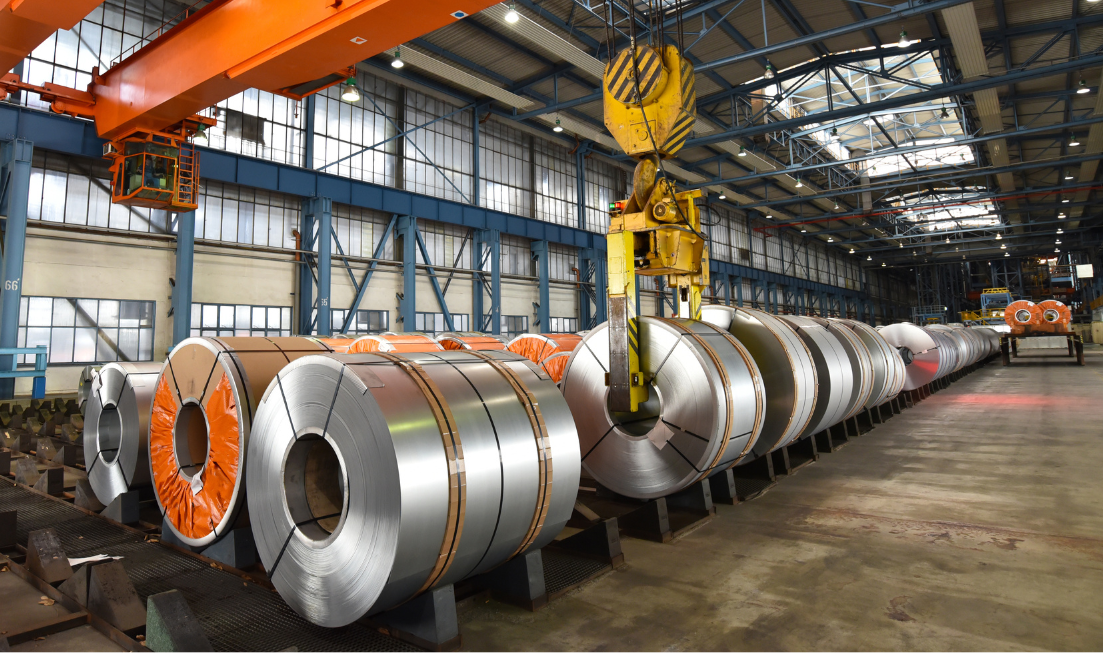Tariffs and Canada’s steel sector: Q&A with Joe McDermid

With half of Canada’s $15 billion steel production being exported to the U.S., newly announced tariffs will make a significant dent in the industry, warns Joe McDermid, director of the McMaster Steel Research Centre.
February 14, 2025
U.S. President Donald Trump’s announcement this week of a 25 per cent tariff on steel and aluminum imports, starting in March, has significant implications for Canada’s steel industry, which is a cornerstone of the country’s economy.

Canadian steel companies play a crucial role in supporting manufacturing, infrastructure, transportation and energy sectors locally and south of the border. Steel is used in automobiles, construction, railways, housing, roads, bridges, the oil and gas industry and in generating renewable energy.
Joseph McDermid, professor of Materials Science and Engineering, and the director of the McMaster Steel Research Centre, shares some insights on the potential impact of these tariffs on Canada’s $15 billion steel manufacturing sector.
How detrimental will these tariffs be on the Canadian steel industry?
The impact of these tariffs on the Canadian steel industry will be significant. While Hamilton is known as the steel capital of Canada, steel manufacturing operations are present in every province, producing sheet, beams, tubes, rebar, wires, and pipes.
With 50 per cent of Canadian steel production, valued at around $7.5 billion, being exported to the U.S., Canada is heavily dependent on the U.S. as a major importer.
Why does the U.S. depend on Canadian steel if they have a large steel manufacturing operation?
The U.S. and Canadian steel industries are highly integrated, with significant cross-border traffic occurring across all sectors, with the automotive industry being the most significant exemplar of this. Recent production figures have indicated that U.S. steel production has declined, and tariffs will definitely make Canadian steel less competitive versus equivalent steel products manufactured in the U.S.
During the first Trump presidency, tariffs were placed on steel and aluminum. What lessons were learned then that may apply to today?
The economic consequences of the tariffs were negative for both countries. In 2018, when 25 per cent tariffs on steel and 10 per cent tariffs on aluminum were introduced, the Canadian steel and aluminum sectors experienced a downturn.
No one wins in a trade war. The U.S. needs Canadian steel and aluminum, and tariffs only add costs to American consumers.
How might tariffs impact Canadian steelmakers’ ability to further invest in “green” steel?
Canadian steelmakers are committed to producing green steel, but tariffs may hinder their ability to invest in this innovation. Transitioning to green steel is complex and requires a significant financial commitment. While it may not be financially attractive to invest in green steel during a trade war, legislative drivers may continue to make it a priority.
What other countries are or could become trading partners for Canadian steel?
Canada exports steel to Mexico and has smaller markets in Asia and Europe. However, shipping costs are a significant factor.
It is cheaper to transport steel to nearby markets like Detroit than to ship it overseas. Europe and Asia have their own steel manufacturing operations, making them less reliant on Canadian steel.


